Network cables are designed to carry data and information to and from computers, switches, storage area networks and routers. There are many different kinds of communication cables available. Which cables are right for your circumstances depends on many different factors, such as the nature of your overall system and your specific requirements. Twisted pair cables are the most commonly-used cables for businesses including companies working in industries like retail and the commercial sector.
Twisted pair cable is used in a vast range of ethernet networks. This cable features four pairs of conductors. The pairs are twisted into numerous additional twists. The twists exist to prevent interference from other cables and devices.
A brief history
| Though digital communication seems to be a relatively new concept, its history stretches as far as back as 1844. This was the year when Samuel Morse unveiled the telegraph and used it to send a message from Washington DC to Baltimore, a distance of 37 miles. Although the nature and capabilities of digital communication have changed hugely over the years, there are many parallels between Morse’s invention and the ultra-modern systems of today. In the mid-19th century, it was possible to transmit approximately four or five dashes every second, today’s speeds of up to 10 Gpbs mean that ten million zeroes and ones can now be communicated by computers per second. | 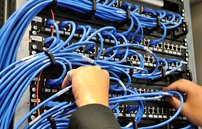 |
During the past four decades, digital communication has evolved at a remarkable pace. As the need for high-speed communication grew and grew, a greater requirement for increasingly-powerful cables and hardware became evident. Ethernet was first developed by Xerox Corp’s David Boggs and Robert Metcalfe in California. Xerox collaborated with Intel and DEC in 1979 to standardise and further develop the Ethernet solution. A specification was unveiled in 1980. This was named the Ethernet Blue Book and was also referred to as the DIX standard and called for speeds of up to 10 Mpbs to be introduced. Though we are now able to achieve speeds of 10 Gpbs, needs continueto grow, with copper-based cabling beyond used and developed to deliver speeds way beyond this.
Ethernet
Ethernet is the most used type of Local Area Network today. Local Area Networks are networks of computers located within rooms, buildings and campuses. WAN stands for Wide Area Network and covered much larger areas. Ethernet controls how much data is transmitted throughout a LAN and is also officially known as the IEEE 802.3 protocol.
When machines in LANs wish to send data to other computers or devices, they sense the carrier or wire that connects the machines to see if it is free and not currently being used by other devices. If a data packet is already on the network, the devices holds onto it until it is able to send it. All the other devices check the packet to find out whether the packet is intended for them.
How long will cabling last?
Cabling can last between 15-20 years before it needs to be replaced. The network equipment you need for your digital communications will need to be replaced around three or four times before your cabling system reaches the end of its life. Cabling will normally set you back around 15% of your complete network cost. By investing in the right cabling solutions for your needs, you can minimise downtime, cut down on maintenance and enjoy enhanced performance.
Copper Cable and Mixed Networks
Though copper can seem costly, technological advancements have made it far more reliable than it was in the past. Not too long ago, it was primarily used for low-speed, short-distance networks, but the 10GB speeds it is now able to deliver mean it has risen dramatically in popularity over recent years. Many of our clients choose to opt for mixed networks which include copper cable and a fibre backbone. Should you ever have any queries about whether copper is right for you, simply get in touch for bespoke advice based on your specific circumstances and budget.
Fibre Optic Cabling
| Fibre optic cabling is often used in environments where high bandwidths are required, such as data centres, banks and hospitals, though more and more companies from various different industries are now opting for fibre optic network cable installation due to the substantial volumes of data that it supports. | 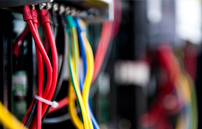 |
Fibre optic cabling can connect CCTV systems, broadband, telephones and computer networks and is generally seen as a faster and more reliable alternative to copper. It is capable of carrying vast volumes of data, which makes it an ideal option for various bigger organisations. Another good reason for choosing fibre optic cabling is that it can deliver clearer phone calls thanks to the reduced signal degradation on offer. Fibre optic cabling has light power demands and has a high carrying capacity.
What you need to consider
You should think very hard about which cable installation services are right for you to avoid making an investment that you’ll come to regret later. It’s always wise to consider your long-term needs carefully as well as your current requirements. Your choice in cabling is always likely to be influenced substantially by the kind of network you are running.
There are several technical factors related to your current infrastructure to consider. These include the maximum distance between your network switches and the furthest device away from them. You will need to think about bend radius and the amount of space you have available for running cables through the ceiling and floor, and whether there is abandoned or existing cable that needs to be removed. Electromagnetic interference or EMI needs to be considered. Whilst copper and fibre can both provide high-quality data transmission, factors including cost, distances, bandwidth, your current network and future needs can all play a big role in determining which option is right for you.
CAT7 cabling
Category 7 cabling is a form of cabling used for Gigabit Ethernet and is able to deliver efficiency of up to 600MHz. It is ideal for smart homes as well as businesses seeking the highest standard of performance available to them. CAT7 is different from its predecessors such as CAT 5 and CAT 6 for many reasons. One of the main reasons for choosing CAT7 is that its twisted pairs are shielded, which means you can look forward to enhanced noise resistance when you opt for this solution. Though CAT7 may be expensive and therefore beyond many budgets, if you do have the capital to spare you can expect to enjoy an excellent return-on-investment and to enjoy vast efficiency years into the future once it is installed.
When CAT 7 is in place, you can forget about the expense and fuss of re-wiring to accommodate new innovations and features in the future. CAT7 also offers greater power and reduced voltage drop. It has a vast copper cross-section, and its individual cores are simpler to manage. Not only is each pair of wires shielded, an overall shield is also built into the cabling. At the time of writing, you normally need to pay around £180 per 250m of CAT7 cabling. As CAT7 is somewhat future-proof, you won’t have to worry about the fuss, expense of inconvenience of opening up walls to accommodate new cables for many years after installation has taken place. CAT7 will give you the lowest amount of noise and crosstalk, is backwards-compatible, gives you more bandwidth and has high longevity. If there are any cons attached to CAT7, it’s that it is more suitable for offices than homes, can be expensive depending on your budget and is tougher to install.
CAT6 cabling
| If CAT7 cabling seems too costly or inconvenient, you may well wish to opt for CAT6. CAT6 offers a range of benefits, including the way it can meet most household needs and is backwards-compatible. It is also relatively easy to install and somewhat cheaper than CAT7. Some of the cons associated with CAT 6 cable installation are that it sometimes pulls cool air through cracks in ceilings and may deliver carbon monoxide backdrafts. | 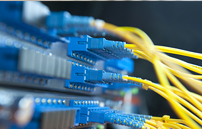 |
CAT6 is often seen as one of the best solutions for home customers as it can deliver all the speed you need to perform everyday tasks like downloading, streaming and gaming. It may also be seen as a worthwhile solution for small-to-medium office environments. There are two types of CAT6 available, which are the standard CAT6 and CAT6A. CAT6 will normally set you back 50% more than CAT5, whilst CAT6A will cost 50% more than CAT6. CAT6A is designed around more tightly-twisted conductors and also has separators between wires so crosstalk can be reduced or eliminated, and insulation can be enhanced. Modular connectors are often needed to connect the cables.
You can expect CAT6 cables to last around a decade before degradation begins and errors become more and more frequent. The way that the wires are separated within the cable was seen as a significant innovation, with CAT6A being noted for its even greater noise reduction improvements. As CAT6 is backwards-compatible, it is able to work with any cabling from CAT4 and upwards. This means you don’t need to upgrade equipment when upgrading wires. Whilst CAT5 is capable of supporting gigabit speeds, CAT6 is actually certified to cope with gigabit.
Cat5 cable wiring
Though CAT5 may seem old hat, there are still many good reasons for opting for this solution, including its excellent cost-efficiency. There are two types of CAT5 available, which include standard CAT5 and CAT5E. CAT5E was first launched way back in 2001, when CAT3 was still a popular option. CAT5, CAT6 and CAT7 cables all have the standard Ethernet plug which fits snugly into most computers, routers and switches, but there are many differences between the three. You can expect to save around 30% by opting for CAT5 instead of standard CAT6 and around 60% for choosing CAT5 over CAT6E, which makes it an ideal solution for many on a budget.
CAT5E is usually 24 gauge and is able to run Gigabet networks for 328 feet. CAT5E has often been used in conjunction with CAT6, with the former acting as a workstation with CAT6 supporting it by running between routers and switches. CAT5E is an improved version of CAT5 featuring special specifications for crosstalk. CAT5 and CAT5E can normally support networks running at 10 Mbps or 100 Mbps. CAT5E is backwards-compatible with CAT5, which means you can use it in any application where CAT5 would normally be utilised. CAT5E can support Gigabit Ethernet and networks that are running at 1000Mbps. Crosstalk was reduced significantly with the advent of CAT5E, which means problems with slow transfer speeds and blocked transfers can be greatly reduced. CAT5E also has has higher bandwidth than CAT5, providing 100Mhz rather than 350Mhz. Many users find CAT 5E cable wiring is just or almost as reliable as CAT6.
Fibre Optic Cabling
| Fibre optic cabling offers significant benefits for the businesses of today, yet the fact that it remains a relatively new option means many companies remain hesitant to invest in it. Fibre optic cabling can deliver blisteringly fast data transmission for homes and businesses. Fibres transmits data via light rather than electricity, and this means faster internet connections which are able to manage much higher bandwidth are available. Even when demand peaks, providers of fibre optic connections are able to deliver over their advertised speeds, according to studies. | 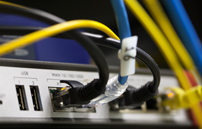 |
Fibre optic connectivity can provide vast benefits to companies of all sizes, especially businesses that work in the cloud and use it for data storage. Fibre optic cabling is often used by businesses who wish to make the most of VoIP telephony and can deliver speeds that beat what even CAT7 cabling has to offer. In fact, you may be able to experience speeds of up to a stunning 100 Gbps when you choose fibre optic cabling. Furthermore, even when there is a high demand for internet access, you shouldn’t see slower speeds. One study said that businesses faced with slow internet connections lose one week of productivity each year, which explains why so many organisations are deciding to invest in fibre optic technology.
It’s said that more than 80% of businesses and organisations are now using the cloud in some capacity. Fibre optic can provide exceptionally fast access to anything stored in the cloud, including applications and data. By opting for fibre optic, you can keep your customers and clients happy by keeping communication standards sky-high.
Fibre is also incredibly strong and is not affected by adverse weather conditions. Bad weather can cause speeds to grind to a halt when other forms of cabling are used. Fibre optic cable installation also delivers sizeable benefits in terms of signal strength. The signal strength of fibre-optic connectivity won’t degrade quickly over distance, which means fibre-optic can be the perfect solution for businesses housed in large premises.
It’s also harder to hit your bandwidth limit when you opt for fibre optic. The bandwidth available to you is generally high, and your network won’t slow down when demands are at their highest. Another good reason for choosing fibre optic is that upload and download times are usually equal, so you won’t face issues when it comes to what’s known as symmetric speed. Today, companies are uploading much more data including files, phone calls and video content than they were in the past, which means high upload speeds are essential for more and more businesses across various sectors.
Another big advantage of fibre optic cabling for businesses is that it delivers reduced latency. When latency is reduced, it may become easier to send apps to the cloud, experience higher VoIP voice quality, improve collaboration between workers and transmit and receive big files without being disrupted. There are also big benefits to look forward to when it comes to security as the fibre-optic networks can only be penetrated by physically slicing the fibres. Investing in fibre-optic connectivity can mean enjoying optimal protection from cyber-criminals. Fibre optic cable installation won’t completely remove the chances of being affected by cybercrime, but it can substantially reduce the chances of your network being compromised. What’s more is that electromagnetic interference won’t cause your signals to disappear or degrade.
Finally, fibre optic connectivity can provide vast support when it comes to HD video, making video conferencing and other related activities a breeze. When it comes to the disadvantages associated with fibre optics, you will need to invest a sizeable sum in installation, may need to pay higher monthly fees for related services and may have a modest pool of internet service providers to choose from. Nonetheless, you may achieve a substantial return-on-investment due to improved connectivity, greater speeds and heightened productivity.
Setting up an office network
The idea of setting up a Local Area Network or office network may seem daunting, but the prospect doesn’t need to be so off-putting when you enlist the services of leading professionals. Local Area Networks enable groups of computers and devices to connect to the internet, but if they are set up incorrectly all kinds of costly problems can occur. If you don’t have the experience or expertise needed to set up your network, it’s essential that you turn to professionals that have carried out this kind of work countless times. In fact, incorrectly installing an office network system can even be dangerous.
Routers and switches
| The vast majority of today’s computers and devices have networking capabilities built into them, which means you won’t normally need to upgrade your machines. However, you may still need to invest in switches and routers. | 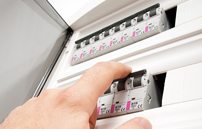 |
One of the first things you’ll need to acquire when setting up a network or having one installed for you is a quality wireless router. Wireless routers connect the network to the internet and give each device or machine an IP address, so computers can ‘talk’ to one another. Routers have a pivotal role when it comes to security and normally have firewall systems built into them to defend your network from attack. It’s wise to invest in the highest-quality router that your budget can stretch to in order to achieve all the efficiency and protection that you require. Depending on your needs and the nature of your business, you may need to purchase more than one router. The price you need to pay for a router will normally depend on which capabilities you require.
Switches are designed to enable devices and machines to communicate with one another, and there are two main types of them available, which are managed and unmanaged. An unmanaged switch may be fine if stringent monitoring is not required, though a managed switch can give you a high level of control thanks to the way it can be monitored and programmed. You will need some technical expertise to carry out monitoring and programming. The higher the number of switches available on a port, the more machines, devices and computers can be connected. If you expect to add more devices in future, make sure enough ports are available to accommodate this.
Planning a network installation
| Preparation is key when you are setting up an office network. You need to invest the time needed to select all the equipment that you need carefully and plan each aspect of your installation in depth. You should also take a good look around your office or business premises and make a checklist outside of business hours when the environment is quiet, so you can consider your options carefully. You may wish to get help from outside so a survey can be conducted and expert professionals can make valuable suggestions on how to get things right first time. | 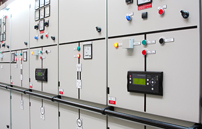 |
Do I need a server?
If you are transmitting or receiving a sizeable amount of data over your network, it’s extremely advisable to invest in at least one server. Servers give you greater control over your network and make the process of sharing data much more efficient and reliable. Again, help is available from MSE if you do require advice on purchasing the right server equipment for your particular needs. By working with a highly-reputable company trusted by a wide range of clients such as MSE, you can get all the support and impartial advice you need to create an office or business network you can depend on. Don’t hesitate to get in touch to find out more.
Why install a network?
When choosing a firm to help you set up your business network, you should opt for a company with vast experience in catering for firms like yours. Any company running more than one computer can benefit from setting up a network. When you have a network in place, you can share not only your broadband connection but printers, scanners, network drives and much more. A network enables you to store data and files in a centralised location whilst enjoying more efficient sharing and collaboration. You can even use scheduling software to arrange meetings and set up other activities with ease, so everyone is kept in the loop when something important is taking place.
Network sizes
If you have five devices or less in your office or business premises, an entry level network could be right for you. With an entry level network, you can link computers without relying on a central server and will still be able to share files, connections and printers. This kind of set-up is generally inexpensive and is likely to be suitable if you only have modest networking needs and your offices or business premises are modestly-sized.
If you have between 5 and 25 users to cater for, what’s known as an intermediate network could be ideal. You may need to invest in an entry-level server to support shared file storage and back up essential files. You can expect to pay somewhere in the region of £2,000 for this service.
Do you have more than 25 employees or machines? If so, a more robust server could be needed to facilitate your company’s own intranet and software for collaboration, as well as Wi-Fi connectivity in certain parts of your premises. Of course, you may wish to work in the cloud or split your activities between the cloud and physical servers.
When you are having a network designed and installed for you, you will need to provide information on various topics. Questions you might be asked may be based around the number of computers and devices you will be using, how many full-time staff you have, how much data you are likely to be sharing, how much bandwidth you will need and the kind of files you will be sharing, as well as your requirements going forward. If you are likely to expand your operations and take on more staff in the future, you will need to provide details on this.
Wired or wireless?
Some companies are opting for wireless solutions over the wired approach. There are various pros and cons attached to this. You won’t need to worry so much about fiddly, unsightly wires and will have more freedom when it comes to rearranging your office on a regular basis. You will also be able to provide customers, clients and guests into your network. The disadvantages of this solution are that you may face significant connectivity issues which may harm productivity. In most cases, those opting for a wired network can expect faster speeds, more dependability and greater cost-efficiency.
Protection from cybercrime
If you are a small business, there’s a big chance you will be targeted by cyber-criminals. This is because hackers and other such types see smaller organisations as more vulnerable and less educated about online security. It’s wise to complete a risk assessment before your network is installed so various risks can be acknowledged. Training your staff in issues related to cybercrime can also be highly-beneficial. Future-proofing can be incredibly important for small business who stand a good chance of growing over coming years, so it’s vital to think about where your business is likely to be in two or three years as well as your current requirements to save you money in the long run and ensure you are fully set-up to cater for your future needs.
Are there any laws around commercial network cabling or regulations or standards?
| As poorly-installed network cabling can present various risks and dangers, there are standards and regulations in place to ensure installations are carried out to the highest standard. Even a small issue with your cabling can have an adverse impact on your network, so it’s vital that your installation is carried out by competent professionals. | 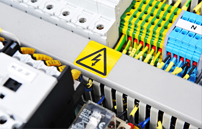 |
There are two standards in place for network cabling, which are T568a and T568b, and the two should never be used on the same network. Cabling should never be laid on or suspended on ceiling tiles as this can mean breaking regulations around fire, buildings and health and safety. Data cables should never be run alongside electrical cables. Copper and fibre cables must comply with the Construction Products Regulations related to fire performance, and all new cables have to carry CE marking. To find out more about the regulations and standards related to data network cabling, please get in touch.
Anyone employed to carry out network cabling installation must be fully-trained and qualified to do so. Bodies and vendors that approve courses on fibre optic and data cabling include City and Guilds, Cisco and Emtelle. The limitation for lengths of cable is normally around 90 meters, though you may be able to exceed this in very rare circumstances.
What is the cost of getting install network cabling install?
The costs of having network cabling installed at your home or business premises can vary significantly depending on various factors, including the type of installation, the parts being used, the number of parts, the time taken to carry out the installation and the number of employees required to install your network. At MSE, we offer highly-competitive prices for professional network cabling services, so please get in touch to get a quote or arrange a consultation.
How can I maintain my network? Does network cabling need servicing?
It’s essential to manage your cable network carefully. When you have a quality management process in place, maintaining and managing your network is much easier. You may find it easier to manage your cables by investing in racks to make identifying individual cables easier. Labelling and colour coding cables can simplify cable management and speed up the process of replacing or repairing cables when technical issues arise.
Help is available if you have discovered a problem with an ethernet or fibre optic cable. There’s a strong chance you won’t need to purchase a replacement as many problems can easily be resolved, with the maintenance staff accessing and fixing the exact areas where breakages are have taken place. Many business owners have worsened their problems by attempting to put things right themselves. However, attempting a fix without the knowledge or competence to do so can be very dangerous.
How do network cable installers get qualified?
Professional network cabling engineers and installers are tasked with installing and maintaining a wide range of network systems. Work can take place externally as well as internally, and they often carry out their duties on poles, towers and in trenches using equipment like cranes and differs. Network cabling installers can work for companies and organisations including utilities companies, telecommunications providers and construction firms. Increasing demands related to data and communications have led to a substantial rise in vacancies for network cabling designers. Some of the most well-known qualifications in network cabling include City and Guilds’ Basic Principles of Comms Cabling), Fibre Optic and Data Cabling. The number of businesses with increased bandwidth and cabling requirements means the demand for cabling professionals is set to continue growing over the coming years.
Why MSE?
| MSE is a market-leading provider and installer of network cable wiring. At MSE, we have been supplying and installing network cabling for many years and are able to count a wide range of businesses amongst our client network. We have an excellent track record when it comes to customer satisfaction and constantly add the latest and most exciting innovations to our range of products and services so our clients can continue to benefit from the very latest technological advancements. |  |
We have installed cabling at industrial and commercial premises of various sizes and can cater for you if you wish to optimise speeds, reduce network downtime and make communication a more reliable process. We are the nominated for a host of well-known companies and organisations throughout the United Kingdom, and we are specialists in fibre optics, CAT5, CAT6 and CAT7 cabling. Should you need us to design and install your premise’s entire digital communications infrastructure, we can do so.
At MSE, we understand that it can be hard to know where you stand when it comes to your data network cabling needs if you don’t have vast knowledge of IT. This is why we offer a consultation so we can take a close look at your needs and provide you with impartial advice on identifying the best solution for your business. After we have identified your specific data and networking needs and you decide to go ahead with an installation, we can plan each step of the journey in depth to ensure the ideal outcome is achieved. Some planning will occur whilst the project is taking place as new issues are identified, but you can count on us to always keep you in the loop and seek your permission when changes are made.
Our installations team have vast experience when it comes to executing network cabling installations. Whilst the project is underway, factors such as time, risk and cost will constantly be assessed so the quality of the outcome is never compromised. We never go over your budget or deadline and we always examine progress closely to ensure all objectives are met. Once the project is completed, we can provide you with aftercare to ensure your installation continues to deliver the efficiency that you require.
What other services do MSE provide?
Network cabling is far from the only service offered by MSE. MSE is staffed by fully-qualified mechanical and electrical contractors specialising in a range of fields including ventilation and heating, energy saving and renewables, data cable installation, electrical services and service maintenance. We provide services to clients in Birmingham, across the Midlands and beyond, working in a wide range of commercial and industrial premises.
MSE are able to manage entire electrical projects and can provide and install emergency lighting, access and door entry systems, fire alarms and even associated building work if required. We can install, service and maintain air conditioning units and are able to provide the market’s most impressive and energy-efficient systems for ventilation and heating. We are renowned for our data infrastructure design and installation services and can link systems to deliver faster communication whilst supplying fibre optics, copper cabling and wireless links. What’s more is that we are also able to provide and install a number of innovative energy-saving technologies to reduce your carbon footprint as well as your electricity and fuel costs.
We also have ISO 9001 accreditation and are noted for our project management skills, overseeing projects from start-to-finish whilst causing a minimum of disruption. We are criminal records and security checked and are Daikin D1 partners.
Talk to us today to find out more about fibre cabling and arranging a cable installation with MSE. At MSE, we always endeavour to surpass rather than just meet your expectations and always strive to offer you the latest tried-and-tested innovations to benefit you and your business. Having been in the business for decades, we know what it takes to deliver the highest level of customer satisfaction and always listen closely to client feedback so we can continue to improve our services. You can reach us by calling 0800 0343 913 or by using the contact form on our website. Don’t hesitate to get in touch to learn more about how our data cabling solutions can drive your business forward.

